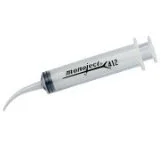
Oral Surgery Post-Operative Instructions
Going home after surgery
• Bite firmly on the gauze in your mouth to help stop the bleeding
• Eat or drink as soon as you are able to – you need good nutrition to heal!
• Remove the gauze after 30-45 minutes of firm pressure (minimize talking!) and replace with more gauze from your patient bag if needed. Once the bleeding has slowed to a level you are comfortable with, you no longer need to hold pressure. Average patients change the gauze only once, maybe twice.
Post-Operative Medications
• NSAIDS (Tylenol and Ibuprofen) will control most of your post-operative pain.
• If appropriate, we will prescribe a narcotic pain medication to help with severe pain.
• You may be prescribed an antibiotic; use them as directed:
o Mouthrinse antibiotic: Peridex (Chlorhexidine mouthrinse)
o Systemic Pill/Capsule (examples: Amoxicillin, Augmentin, Z-pack, Clindamycin)
At home
• Minimize discomfort by taking Tyleonl and ibuprofen with meals three times a day
• Brush your teeth as you normally would, but be gentle around the surgical site.
• Irrigate (rinse) the lower tooth sockets after every meal or at least twice a day, starting on day 2 after surgery – this will keep the holes clean. You can either swish or use the provided syringe to irrigate. The tip of the syringe doesn’t have to be in the socket, just direct the fluid into the area to remove some food debris.
• Apply ice to your cheeks/face for the first 24-48 hrs and try to keep your head elevated the first night after surgery. Warm, moist heat can take the place of ice on day 2 or 3.
Rinsing the lower wisdom tooth sockets
THINGS YOU’LL NEED:
✓ Irrigating syringe (provided by our office)
✓ Water or mouth rinse (either is fine)
✓ A mirror and sink
STEP BY STEP INSTRUCTIONS:
1. Draw up irrigating liquid into syringe until it is about half full
2. Open your mouth as widely as you can
3. Pull your cheek to the side with your index finger
4. Insert the tip of the syringe into the tooth socket behind your last molar tooth until almost half the tip is under the gum tissue
5. Gently rinse the socket in slow, pumping motions
6. Repeat 2-3 times, then do the same on the other side
SYRINGE CLEANING:
The syringe just needs to be pulled apart, rinsed, and set out to air dry after each use. The syringe is NOT dishwasher safe.
TIPS:
The first few times you irrigate, the sites may be tender for 15-30 minutes afterward - this is normal. This will improve with repeated flushing. There may be a slight oozing of blood with irrigation - this is normal.
If you skip irrigating for several days, it will be significantly more painful when you resume irrigating.
Frequently Asked Questions (FAQs)
Do I have stitches? When will they come out?
Often, we place stitches to reapproximate the tissue and aid in the healing process. Unless you are told otherwise, they will dissolve and fall out on their own. If one or two stitches break or come out early on there own, there is no cause for alarm. This is normal, if you are concerned call the office and speak to our staff.
I’m still bleeding after surgery – what do I do?
You will still have some bleeding from the mouth for the first day or two after surgery – this is normal and is mostly your saliva turned red from small amounts of blood. If the bleeding isn’t slowing down, insert the provided gauze where the surgical site was and bite firmly for 30 minutes to apply pressure.
When rinsing the lower tooth sockets, should I use water or the mouth rinse?
Either is completely fine. The main goal of irrigating is to get food debris out with a flushing action. You can make a warm salt water rinse or mix 50/50 mouthrinse and water for irrigation fluid.
I can’t see where I’m supposed to put the syringe tip?
Irrigation with the syringe isn’t necessary, but this is a common problem. The hole that you need to find is usually small and located directly behind the furthest back bottom teeth. If you’re still having difficulty, please call our office so that you can come in for us to demonstrate this for you! If you aren’t having any pain and all your symptoms are improving, irrigation is not necessary.
It’s too dark back there. I can’t see this in the mirror. Any suggestions?
Don’t give up…ask for help! Ask a family member. A flashlight or hiking headlight makes visualization much easier.
Do I have to irrigate the top sockets?
No, usually, the top sockets don’t collect much food debris. Any debris that may get impacted in the top sockets typically drains naturally by gravity.
Rinsing sounds like a hassle. Do I really have to do it?
No. Irrigation is one way to aid in healing. Without irrigation, a slurry of all the food you eat will remain in the lower tooth sockets, and this may delay healing.
I feel hard projections near the surgical site. Did you leave some tooth?
No, most likely you are feeling the supporting bone that used to hold your tooth before it was extracted. Without the tooth there, they feel more prominent. They usually smooth themselves out over time, but every once in a while, they separate from the bone and cause a splinter-like issue called a sequestrum. Those can fall out by themselves or easily be removed by us. If you are at all concerned, call our office, and we can bring you in and evaluate the area.
Can I get help?
YES! Please call us anytime if you have questions or if you would like for us to see you. We are always willing to help our patients heal as quickly as possible.


